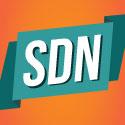NFV, SDN Is a Catalyst for OSS Rethink
The introduction of virtualized functions into telco networks is a real opportunity for a re-evaluation of OSS systems – but quite how much of a revamp can be achieved is another matter.
November 11, 2014

The introduction of virtual network functions and software-defined networking is being viewed by some network operators as a real opportunity to transform their OSS capabilities, according to Heavy Reading chief analyst Graham Finnie.
Speaking at the recent OSS in the Era of SDN & NFV: Evolution vs. Revolution event in London, Finnie noted that research surveys with network operators, in addition to the views of major operators expressed in a recently published white paper, show that OSS transformation is inextricably linked to the introduction of SDN and NFV capabilities, and to gaining the maximum benefits from those capabilities. (See Operators Set Course for NFV's Future and ETSI Group to Tackle Thorny Operations Issues.)
"Everyone recognizes that [current] OSS is a major roadblock to being swift, agile, flexible, fast, whatever word you want to apply… OSS and BSS legacy tends to slow everything down," noted Finnie.
And agility is extremely important. A Heavy Reading survey of 75 operators conducted in late 2013 about the potential benefits of NFV showed that "Service agility and flexibility" was ranked as the most critical benefit by service provider executives, ahead of operating and capital expenditure reductions and network scalability.
But the big question that is still being debated by operators, vendors and analysts alike is: Even if a telco wanted to transform its management systems and processes, is it in a position to be able to do so, from a technology and process/cultural point of view?
Finnie cited Heavy Reading research that shows how tough it is to make changes to the back office. When asked, "Thinking about your own company's progress in migrating to IP throughout the value chain, where do you believe you are making most and least progress?" with regard to four specified layers -- connectivity, control, OSS and services -- almost 40% of network operator respondents stated that the least progress was made with OSS, while only about 10% cited OSS as the layer where they had made the most progress.
Want to know more about the emerging SDN market? Check out our dedicated SDN content channel here on Light Reading.
Evidence from the London event suggests that there will be a very broad range of approaches to updating the back office as virtual network elements and SDN controllers start to make their mark on telco infrastructure. Pan-European service provider Colt Technology Services Group Ltd , for example, wants to retain its centralized OSS methodology as much as possible as it evolves its network, but is already introducing new approaches to activation and is ready to explore the potential management gains from NFV orchestrators (or any other NFV-related tools) if they can provide useful insights into the network and services. (See Colt: NFV Can't Be Backward Step.)
Can other operators learn from Colt's early experience? As Colt OSS architect Simon Farrell explains in a video interview with Light Reading, it really all depends on where an operator is right now in terms of its market strategy and existing (legacy) systems and processes -- and it's hard to identify any two operators that are starting from the exact same point, unless they are "brownfield." (See Colt Evolves Its OSS for SDN, NFV.)
In addition, it all depends on what resources operators want to manage. "Most of our current trouble tickets are for network elements, not services. We are still managing boxes, not services," he noted during his keynote presentation at the event.
For more coverage of the one-day event, see the OSS in the Era of SDN & NFV show news site.
— Ray Le Maistre, 

 , Editor-in-Chief, Light Reading
, Editor-in-Chief, Light Reading
Read more about:
EuropeYou May Also Like










